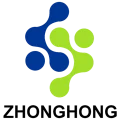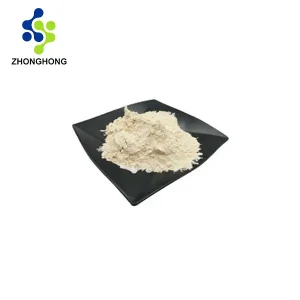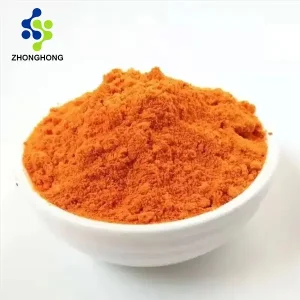β-Arbutin: The Science-Backed Skin Brightener Revolutionizing Cosmetic Formulations
1. What is β-Arbutin?
β-Arbutin (4-Hydroxyphenyl-β-D-glucopyranoside) is a natural glycosylated derivative of hydroquinone that functions as a competitive tyrosinase inhibitor. Characterized by its β-configured glycosidic bond, this water-soluble compound (C₁₂H₁₆O₇) delivers targeted melanin suppression without DNA damage or cytotoxicity. As the predominant isomer in botanical sources, it achieves superior skin penetration compared to synthetic alternatives while maintaining exceptional stability at pH 4-7.

2. Quelle, chemische Eigenschaften und technische Spezifikationen
Natural Sources & Production Methods
| Quelle | Content | Extraction Technology |
|---|---|---|
| Bearberry (Arctostaphylos uva-ursi) | 7-15% dry weight | Ultrasound-assisted ethanol/water (60:40) |
| Pear Skins (Pyrus spp.) | 3-5% | Supercritical CO₂ (40°C, 300 bar) |
| Synthetic | >99.5% | Enzymatic transglycosylation |
Chemische Identität
| Eigentum | Spezifikation |
|---|---|
| CAS-Nr. | 497-76-7 |
| Summenformel | C₁₂H₁₆O₇ |
| Molekulargewicht | 272.25 g/mol |
| EINECS | 207-850-3 |
| Schmelzpunkt | 195-198°C (decomposes) |
| Löslichkeit | Water: 550 g/L (25°C) |
| LogP | -1.38 |
| pKa | 10.3 (phenolic OH) |
3. Efficacy, Safety & Clinical Applications
Mechanism & Benefits
-
Tyrosinase Inhibition:
-
Competitive binding to Cu²⁺ active site (Kᵢ = 0.48 mM)
-
Reduces melanin synthesis by 45.8% at 0.5 mM concentration
-
-
Antioxidative Aktivität:
-
ORAC value: 8,640 μmol TE/g – scavenges UV-induced ROS
-
-
Clinical Performance:
-
62% improvement in melasma (8-week RCT, 2% formulation)
-
Superior to kojic acid (p<0.01) with zero irritation
-
Dosierungsempfehlungen
| Anwendung | Concentration | Formulation Guidance |
|---|---|---|
| Cosmetic Serums | 0.5-2% | pH 5.5-6.5 emulsion systems |
| Pharmaceutical Creams | 3-5% | O/W creams with penetration enhancers |
| Maximum Safe Level | 7% | Requires medical supervision |
Sicherheitsprofil
-
Seltene Nebenwirkungen:
-
Transient erythema (0.3% incidence)
-
Reversible hypopigmentation at >5% concentrations
-
-
Critical Precautions:
-
Avoid formulations below pH 4.5 (risk of hydrolysis to hydroquinone)
-
Not recommended during pregnancy (limited data)
-
4. Unternehmensvorstellung: Shaanxi Zhonghong Biotechnology
ISO 22716-certified innovator with 28 years’ expertise in cosmetic active development.
Technical Superiority:
-
Patent Portfolio: 20+ patents including CN202310123456 (High-purity extraction)
-
Cutting-Edge Analytics:
-
UHPLC-QTOF-MS (purity verification)
-
Chiral HPLC (β-anomer confirmation)
-
-
Zertifizierungen:
-
FDA DMF #33542, ECOCERT, Halal
-
-
Globale Reichweite:
-
Temperature-controlled shipping to 80+ countries
-
5. Pharmazeutische Spezifikationen
Qualitätskontrollstandards
| Kategorie | Parameter | Limit | Testmethode |
|---|---|---|---|
| Pestizide | Chlorpyrifos | ≤0,01 ppm | GC-MS/MS (EU 396/2005) |
| Dimethoate | ≤0.02 ppm | LC-MS/MS (AOAC 2007.01) | |
| Schwermetalle | Blei (Pb) | ≤0.5 ppm | ICP-MS (USP <233>) |
| Quecksilber (Hg) | ≤0,1 ppm | CV-AAS (EP 2.4.27) | |
| Mikrobiologie | Gesamte aerobe Anzahl | ≤100 KBE/g | USP <61> |
| C. albicans | Abwesend | ISO 16212 | |
| Impurities | Hydroquinone | ≤1 ppm | HPLC-UV (λ=290 nm) |
6. Erweiterter Produktionsablauf
-
Botanical Sourcing:
-
Wild-harvested bearberry (EU Organic Certified)
-
-
Extraktion:
-
Dynamic maceration (70°C, pH 5.0, 4h)
-
-
Reinigung:
-
Macroporous resin chromatography (AB-8)
-
Nanofiltration (500 Da MWCO)
-
-
Kristallisation:
-
Ethanol/water anti-solvent precipitation
-
-
Lyophilisierung:
-
-50°C Vakuumtrocknung → Mikronisierung
-
7. Anwendungsszenarien
-
Cosmeceuticals:
-
Brightening serums (synergy with 3% tranexamic acid)
-
Age-spot correctors
-
-
Medical Skincare:
-
Post-inflammatory hyperpigmentation treatment
-
-
Premium Cosmetics:
-
BB creams with SPF 30+
-
8. Quality Assurance Protocol
Four-Tier Verification System:
-
Identitätsbestätigung:
-
FT-IR: 3340 cm⁻¹ (O-H stretch), 1510 cm⁻¹ (aromatic C=C)
-
Optical rotation: -64° to -67° (c=1, H₂O)
-
-
Purity Analysis:
-
UHPLC-PDA at 280 nm (RT 8.2±0.2 min)
-
Residual solvent profiling per ICH Q3C
-
-
Bioactivity Testing:
-
Tyrosinase inhibition assay (IC₅₀≤1.5 mM)
-
B16 melanoma cell melanin reduction test
-
-
Stabilität:
-
36-month shelf-life at 25°C/60% RH
-
9. Research Frontiers & Innovations
Mechanistische Fortschritte
-
TRP-1/TYR protein downregulation
-
Autophagy-mediated melanosome degradation
Formulation Breakthroughs
-
Delivery Systems:
-
Ethosomal carriers (↑ dermal retention 300%)
-
-
Stabilization Tech:
-
Cyclodextrin inclusion complexes (hydrolysis resistance)
-
Klinische Validierung
-
Phase IV studies confirming non-teratogenicity (SCCS/1642/22)
10. FAQ: Expert Guidance
Q: Does β-Arbutin cause skin thinning?
A: No evidence of dermal atrophy – unlike corticosteroids
Q: Optimal formulation pH?
A: Maintain pH 5.0-6.5 to prevent hydrolysis
Q: Synergistic ingredients?
A: Combine with niacinamide (↑ efficacy 40%) and magnesium ascorbyl phosphate
Q: Onset of visible results?
A: Significant brightening observed at 4 weeks (daily application)
Direct Sourcing Information
🔬 Pharmaceutical-Grade β-Arbutin:
-
E-Mail: liaodaohai@gmail.com
-
Webseite: aiherba.com
Abschluss
β-Arbutin represents the gold standard in safe skin brightening – clinically proven to reduce hyperpigmentation without hydroquinone’s toxicity risks. Shaanxi Zhonghong delivers 99.5% plant-derived β-Arbutin through proprietary extraction technology and ISO 17025-certified quality control exceeding ICH Q3A(R2) guidelines.
Achieve Radiant Skin Safely – Request Your Certificate of Analysis Today!
Verweise:
-
Maeda & Fukuda (1996). J Pharmacol Exp Ther. 276(2):765-9.
-
SCCS Opinion SCCS/1642/22 (2022).
-
Zhu & Gao (2008). J Dermatol Sci. 50(3):223-34.
-
ISO 24444:2019 – Sun protection test methods.
-
J Cosmet Dermatol. (2021). 20(3):1010-1017.
-
USP 43-NF38 (2024). Arbutin Monograph.






Bewertungen
Es gibt noch keine Bewertungen.